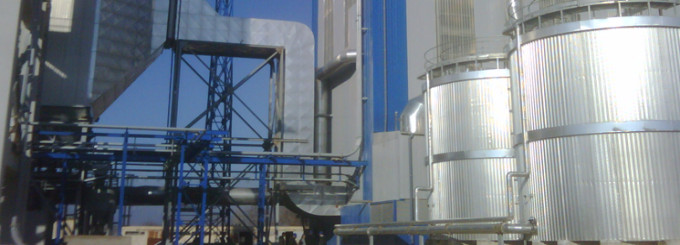Mactenn Design Philosophy
1.Dense phase pneumatic conveying pressure vessels were introduced to the U.S. markets in the early 1960’s. Pressure vessels were used because the pressures required for dense phase conveying normally exceeded 15 psig – the limit at that time for rotary airlock valves which were used almost exclusively by manufacturers of positive pressure dilute phase systems. In order to accommodate the higher pressures necessary for dense phase conveying systems, ASME coded vessels became mandatory.
2.The valves available at that time for use as in-feed to pressure vessels were limited to butterfly valves although slide gates were also tried. There are several problems associated with butterfly valves and slide gates when used as pressure vessel in-feed valves:
a.Butterfly and slide gates valves are not able to cut through a falling or static column of material since the material is trapped between the valve disc and the seat preventing effective sealing when the vessel is pressurized.
Two valves must be used – one above the other. The upper valve cuts off material flow but does not seal. The lower valve then closes properly and seals effectively. (A level probe is necessary in the vessel to sense when the upper valve must close.)
b.When butterfly valves are open, the valve discs are directly in the flow of material. This not only inhibits flow into the vessel, but also makes the valve susceptible to wear, even with mildly abrasive materials. The valve deteriorates at an increasing rate and sealing again becomes ineffective. Often, the valve fails altogether.
c.To avoid poor sealing, the valves must be continuously maintained and often completely replaced – even as frequently as every 2-3 months.
3.To reduce the above effects on the valve, the pressure vessels are designed to cycle infrequently – usually 10 to 12 times per hour. This reduces the load on the butterfly and/or slide gate valves and extends their wear life. This means, however, that quite large vessels are used. For example, a vessel of 15 to 25 cu.ft. conveying through a 4” line is quite common.
4.When the pressure vessel cycles, the material in the vessel is forced out into the pipeline due to the pressure of the air and entrainment of the material with air. With the arrangement described in item 3 above all of the material would be forced into the pipeline as a single plug of material, which would be 175 to 250 ft. long depending on the size of the vessel. The pressure required to transport such a plug would be higher than the available output of a standard compressor, resulting in a blocked pipeline.
The manufacturers of these systems avoid this possibility by “conditioning” the material. Conditioning typically takes place in the pipeline in the form of pipe line air injectors, sometimes referred to as “boosters”. The effect of conditioning is to dilute and break up the plug and maintain a high enough velocity to prevent blockages. Unfortunately, the addition of air through the boosters often causes increased material velocity far in excess of that desired. The effects of such high velocities are high wear rates on pipelines, high particle attrition,excessive air consumptions and, in spite of the boosters, the risk of a blocked line.
5.Macawber realized that to avoid blockages, the necessity of boosters, high air consumptions and high material velocities, it would be necessary to reduce the plug length in the pipeline. It was found, through testing, that a plug length in the range of 40 to 60 ft. would convey at low velocity and with low air consumption using pressures in the 15 to 40 psig range.
6.To produce such short plugs would require small vessels and this, in turn, would require frequent cycles to maintain the desired conveying rate (40 to 80 cycles/hour normally). Clearly butterfly valves are not going to be suitable to address these requirements. Macawber solved this problem by developing the Inflatek Valve. The Inflatek Valve can close through a column of material and seal effectively. The seal is pneumatic and inflates only when the valve is closed. The air pressure in the seal is 80 to 100 psig exceeding the vessel conveying pressure by at least 30 psig. The valve, when open, has no restrictions while filling, and the valve is robustly designed to minimize inspections. Maintenance time and costs are extremely low.
7.In addition to being able to convey materials at low velocity, the Maxsflo offers other advantages:
a.Low profile – easier to accommodate under silos, bulk bag unloaders, reclaimers, etc. Silo heights can be reduced thereby reducing structural support costs.
b.Easier to install.
c.Quicker vessel filling times.
d.Smaller filter units (for exhaust air).
e.No pipeline air injection systems required – less installation – less equipment to maintain.
f.Easier access for inspection.
g.Standard schedule 40 pipelines are used.
h.One year no-wear guarantee on pipeline components.
i.Low power requirements as a result of low air consumption.
8.The Macawber Design Philosophy has been applied to a wide and diverse range of materials in almost every process industry. This advanced process of pneumatic conveying has been refined and developed since its introduction in 1977 and continues to be successfully applied in thousands of installations worldwide.




